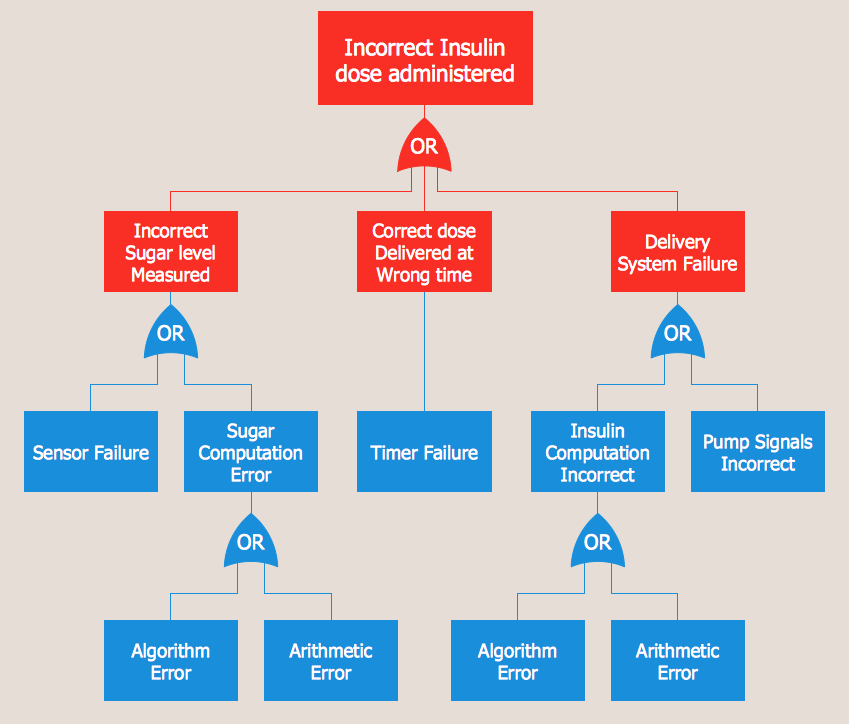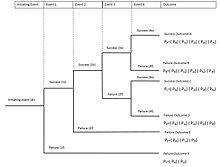Event Tree Analyses Software For Mac

What is a Fault Tree Analysis? A fault tree diagram is used to conduct fault tree analysis (or FTA). Fault tree analysis helps determine the cause of failure or test the reliability of a system by stepping through a series of events logically.
Benefits of Fault Trees A fault tree creates a visual record of a system that shows the logical relationships between events and causes lead that lead to failure. It helps others quickly understand the results of your analysis and pinpoint weaknesses in the design and identify errors. A fault tree diagram will help prioritize issues to fix that contribute to a failure. In many ways, the fault tree diagram creates the foundation for any further analysis and evaluation.
For example, when changes or upgrades are made to the system, you already have a set of steps to evaluate for possible effects and changes. You can use a fault tree diagram to help you design quality tests and maintenance procedures.
Event Tree Analysis Software For Mac
How FTAs are Used Fault tree analysis is useful in engineering, especially in industries where failure can have huge consequences such as nuclear power or aeronautics. However, fault tree analysis can also be used during software development to debug complex systems. Fault Tree Diagram Symbols There are two basic types of fault tree diagram notations: events and logic gates. The primary or basic failure event is usually denoted with a circle.
An external event is usually depicted with a symbol that looks like a house. It's an event that is normal and guaranteed or expected to occur. Undeveloped event usually denotes something that needs no further breakdown or investigation or an event for which no further analysis is possible because of a lack of information. A conditioning event is a restriction on a logic gate in the diagram. These gate symbols describe the Boolean relationship between outcomes.
Visio Professional 2019 Visio Standard 2019 Visio 2013 Visio Professional 2016 Visio Standard 2016 Visio 2010 Visio 2007 Visio Online Plan 2 Visio Premium 2010 Visio Professional 2013 Visio Standard 2007 Visio Standard 2010 Fault tree analysis diagrams are commonly used to illustrate events that might lead to a failure so the failure can be prevented. Fault tree analysis diagrams are commonly used in Six Sigma processes, particularly in the Analyze phase of the Six Sigma business improvements process. You begin by defining the top event (or failure). Then you can use event and gate shapes to illustrate, top-down, the process that might lead to the failure. Once you complete the diagram, you can use it to identify ways to eliminate causes of the failure and to devise corrective measures for preventing such failures. In Visio 2013 and newer versions: Start Visio, and click Business Fault Tree Analysis Diagram Create. In Visio 2010 and Visio 2007: On the File menu, point to New, point to Business, and then click Fault Tree Analysis Diagram.
From Fault Tree Analysis Shapes, drag the Event shape to the top of the drawing page. Drag a gate shape, such as the Exclusive OR gate, onto the drawing page directly below the first event shape.
Continue dragging other event and gate shapes onto the page, positioning them in top-down order to identify the potential causes of the failure represented by the top-level event shape. Connect the shapes. Drag a shape from a stencil onto the drawing page and position it near another shape.
While still holding down the mouse button, move the pointer over one of the blue triangles. The triangle turns dark blue.
Release the mouse button. The shape is placed on the drawing page, and a connector is added and glued to both shapes. To add text to a shape, select it, and then type. When you are finished typing, click outside the text block. Notes:. To edit text, double-click the shape, place the cursor where you want to change the text, and then type.

To hyperlink a shape to supporting or explanatory documents, select the shape, and then, on the Insert menu, click Hyperlinks. To align multiple shapes vertically or horizontally, select the shapes you want to align, then, on the Home tab Arrange group, click Align.
To distribute three or more shapes at regular intervals, select the shapes, and then, on the Home tab, click Position and pick a Distribute option.